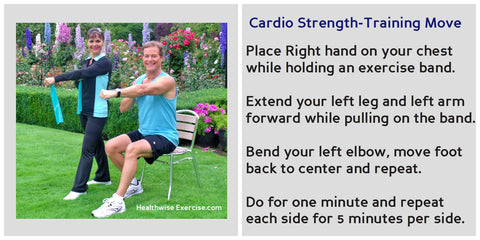Six Best Steps to Cleanse and Detox Your Body
It seems like you can't turn around these days without hearing about a new colon cleanser or detox diet.
These products and systems claim to remove built-up toxins from the body, promoting better overall health. Some involve fasting, while others involve strict liquid diets.
After numerous studies, there is still no scientific evidence that such approaches are beneficial. According to Dr. Michael Picco, a gastroenterologist at the Mayo Clinic, detox diets and cleansers can actually have harmful side effects.
Despite the claims of companies who sell such products, the human body is actually very efficient at filtering toxins. You have a liver and it works very well. 
However, there are several simple, natural steps you can take to ease your body's burden. Here are some proven ways to rejuvenate your body inside and out.
Exfoliate to Renew Your Skin
You may not know this, but I'm also a licensed esthetician, and that's why I know that exfoliation is a quick and easy way to remove dead skin, improve circulation, promote the growth of new skin cells, and give your complexion a natural glow.
It can be done with an exfoliating skin cleanser, a natural skin scrub made from brown sugar and olive oil, or even a gentle soap and a damp washrag every other day.
Give yourself an overall glow by exfoliating your whole body. Purchase (or make) an exfoliating body wash, or purchase a long-handled body brush and scrub it over your body in circular motions before you bathe.
Both techniques will help clear your pores and get rid of dead skin cells.
Learn to Breathe
Do you ever catch yourself holding your breath? Do you tend to breathe in short, shallow bursts? If so, you can decrease your body's stress level by practicing slow, rhythmic breathing.
This technique, called 'conscious breathing', helps you provide more oxygen to your body. This, in turn, helps your body carry out its tasks more efficiently.
Pick a quiet time, such as before you rise from bed in the morning. Take a slow, deep breath inhaling through your nose. You should see your stomach rise first, followed by your chest as you breathe in, then slowly exhale.
Repeat this for up to 10 times depending on your tolerance level. Over time, you will learn to breathe more correctly throughout the day.
Practice Daily Stretching
Stretching and yoga are beneficial to the mind and body. Not only do they relieve stress and keep the muscles limber, they promote blood flow and circulation.
The experts at WebMD recommend stretching all major muscle groups at least 2-3 times weekly. Stretch until you feel a gentle tug, never to the point of pain.
You can go online to find a good stretching routine or, if you have health concerns, ask your doctor to recommend one that's right for you.
Sweat Every Day
Much as we try to avoid it, sweating is actually great for your body. The best way to work up a cleansing sweat is through aerobic exercise.
As you sweat, your body releases stored fluid. Replace this fluid by drinking plenty of water.
After a week or so of daily sweating and hydration, you will begin to notice improvement in your skin tone, stress level, and sleep quality.
Reduce Consumption of Pain Medication
Our livers were designed to filter toxins from our blood, but there's no need to make them work overtime. Be kind to your body by reducing the amount of over-the-counter painkillers you consume.
Researchers at the University of North Carolina at Chapel Hill found that acetaminophen (Tylenol) can cause liver damage even when used as directed.
The liver function of the test subjects was three times higher than normal after just four days of routine acetaminophen use.
Use Fiber and Water to Promote Digestive Health
Fiber and water are the healthiest colon cleansers available. They are also some of the most effective. Fiber is a difficult substance to break down. It makes your digestive system work hard, keeping it in good shape.
Water is essential for our bodily functions. Good hydration means better skin, better joints, and better filtration of toxins.
For optimal results, try to consume at least 30 grams of fiber daily, and at least six to eight glasses of water. When it comes to cleansing and detoxing your body, there's really nothing better than water. You'll know you're on the right track when the urine becomes nearly clear.
Questions or comments? Visit me at: Healthwise Exercise.com
Suzanne Andrews founded Functional Fitness in 2008, the most popular fitness series for boomers and seniors broadcasting on over 159 Public Television stations throughout the US and Canada. Read Suzanne’s inspiring comeback story of how she survived a near fatal accident, From Deaths Door to Producing a National Fitness Series. Feel free to send Suzanne a message here.















